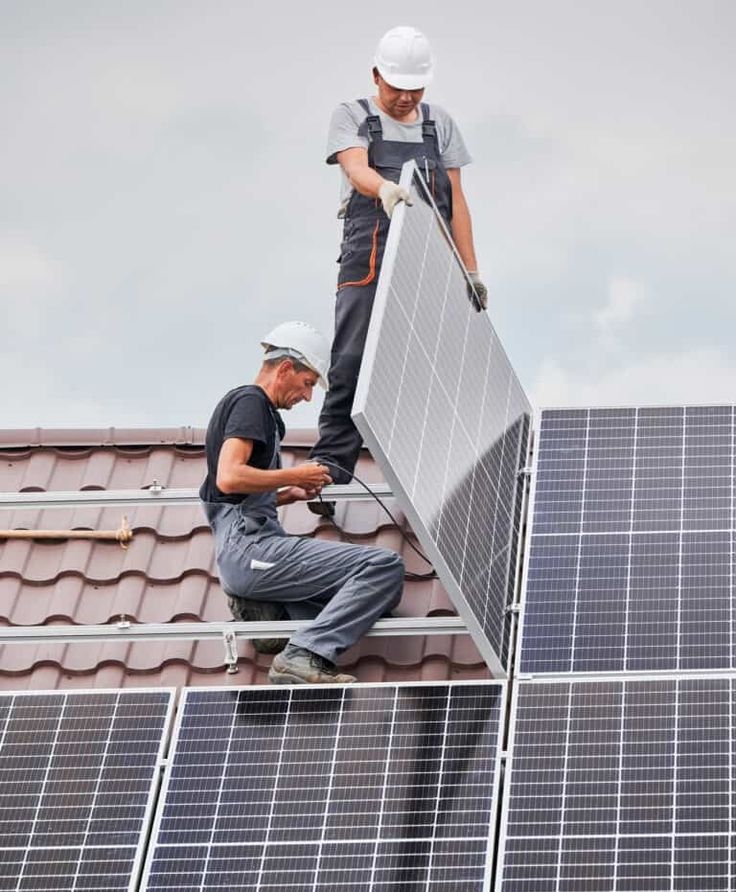When designing a home solar power system, the choice of inverter technology is a critical decision that impacts system functionality, efficiency, and future expandability. While traditional inverters have long been the standard, the emergence of hybrid inverters offers a more integrated and versatile solution, especially for homeowners considering battery storage. Understanding the key differences between these two types is essential for making an informed choice for your solar investment.
What is a Traditional Inverter?
Traditional inverters, commonly known as string inverters or central inverters, are designed primarily to convert the direct current (DC) electricity produced by solar panels into alternating current (AC) electricity, which is usable by household appliances and the utility grid.
- Function: Their main role is the unidirectional conversion of DC to AC power.
- System Integration: In a typical setup, multiple solar panels are wired together in “strings,” and the entire string connects to one central string inverter.
- Grid Reliance: Traditional grid-tied inverters are heavily reliant on the utility grid. If the grid goes down, the inverter automatically shuts off (due to “anti-islanding” safety protocols), meaning your home loses power even if the sun is shining.
- Battery Compatibility: Traditional string inverters do not have built-in battery management capabilities. To add battery storage to a system with a traditional inverter, you typically need a separate, additional battery inverter/charger.
What is a Hybrid Inverter?
A hybrid inverter, also known as a multi-mode or bidirectional inverter, is a more advanced device that combines the functionalities of a standard solar inverter with a battery inverter/charger into a single unit. It acts as an intelligent energy management hub for solar systems that include battery storage and remain connected to the grid.
- Function: It performs bidirectional power conversion (DC to AC, and AC to DC for battery charging) and intelligently manages energy flow between solar panels, batteries, the home, and the grid.
- System Integration: A hybrid inverter connects to both the solar panels and a battery bank, streamlining the system architecture.
- Grid & Battery Interaction: It can draw power from solar panels, batteries, or the grid as needed. It can also send excess solar power to the grid or store it in batteries.
- Backup Power: A key advantage is its ability to provide backup power during grid outages by seamlessly switching to battery power, keeping essential loads running.
Key Differences Summarized
| Feature | Traditional Inverter (String Inverter) | Hybrid Inverter |
|---|---|---|
| Core Function | Converts solar DC to AC for home/grid. | Converts DC to AC, and AC to DC for batteries; manages all energy flow. |
| Battery Compatibility | No built-in battery management; requires separate battery inverter. | Integrated battery management; directly connects to battery bank. |
| Backup Power During Outage | No (shuts down for safety) | Yes (when paired with battery, seamlessly switches to off-grid mode). |
| Energy Flow Management | Primarily solar to home/grid. | Intelligent management between solar, battery, home, and grid. |
| Complexity of Setup | Simpler for solar-only systems. | More integrated, potentially simpler overall for solar + battery systems. |
| Cost (Inverter Unit Only) | Generally lower. | Generally higher (due to integrated functionalities). |
| Future-Proofing | Less flexible for adding battery storage later without additional hardware. | “Battery-ready” design; easy to add/expand battery storage later. |
| Optimal Use Case | Homes focused solely on reducing electricity bills with a stable grid, no immediate battery plans. | Homes wanting battery storage, backup power, or flexible energy management. |
Why Choose a Hybrid Inverter?
The decision often comes down to your energy goals. If your primary aim is simply to reduce your electricity bill and you have a stable grid connection, a traditional string inverter might suffice. However, if you prioritize:
- Energy independence and resilience against power outages.
- Maximizing the self-consumption of your solar energy.
- Leveraging time-of-use (TOU) electricity rates by storing cheaper power.
- The flexibility to add battery storage in the future without a major system overhaul.
Then a hybrid inverter offers a more comprehensive, integrated, and future-proof solution for your home solar power system. While the initial cost of the hybrid inverter itself may be higher, the long-term benefits in terms of functionality, control, and potential savings often outweigh this difference, especially when factoring in the cost of a separate battery inverter for traditional setups.

